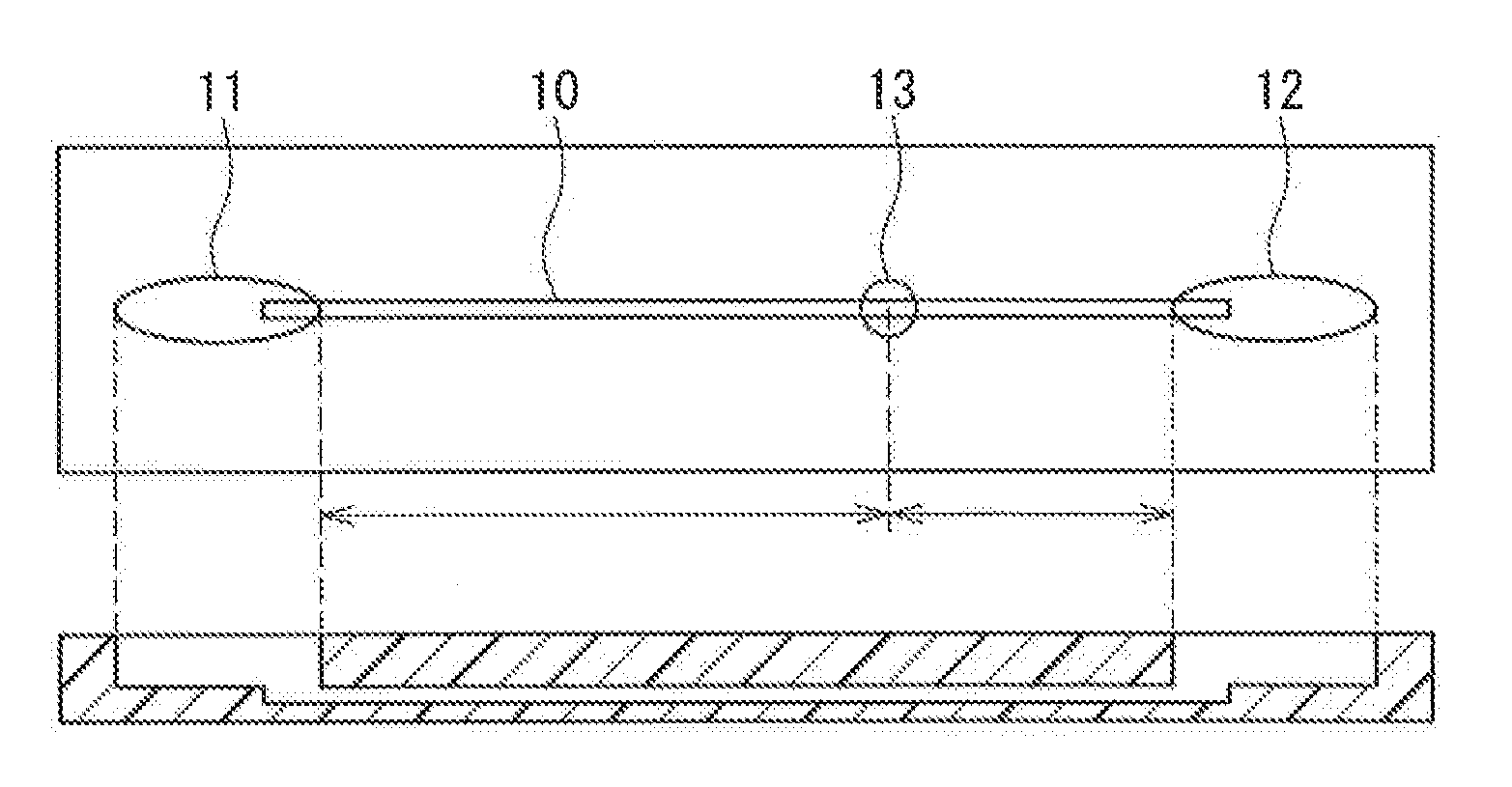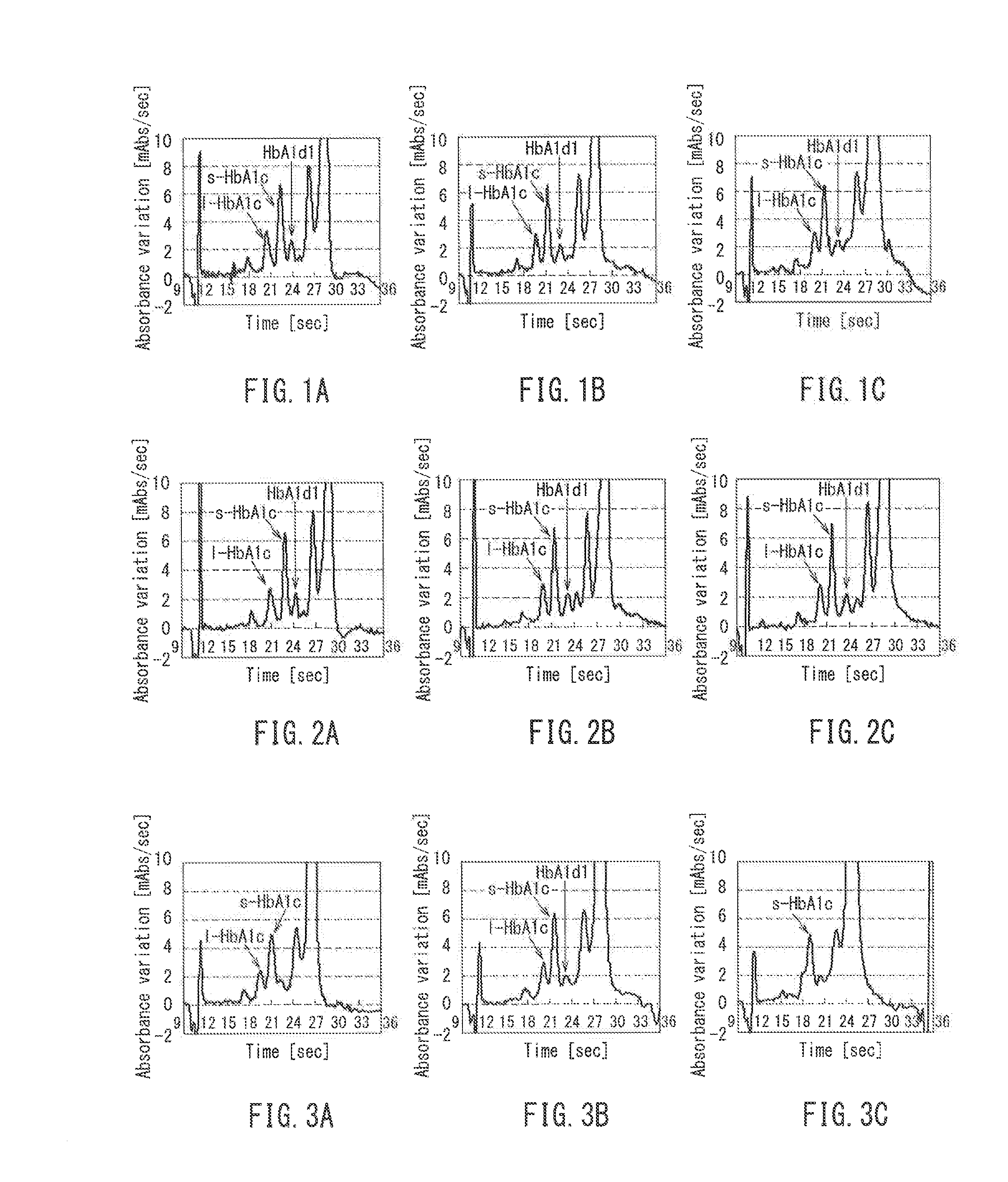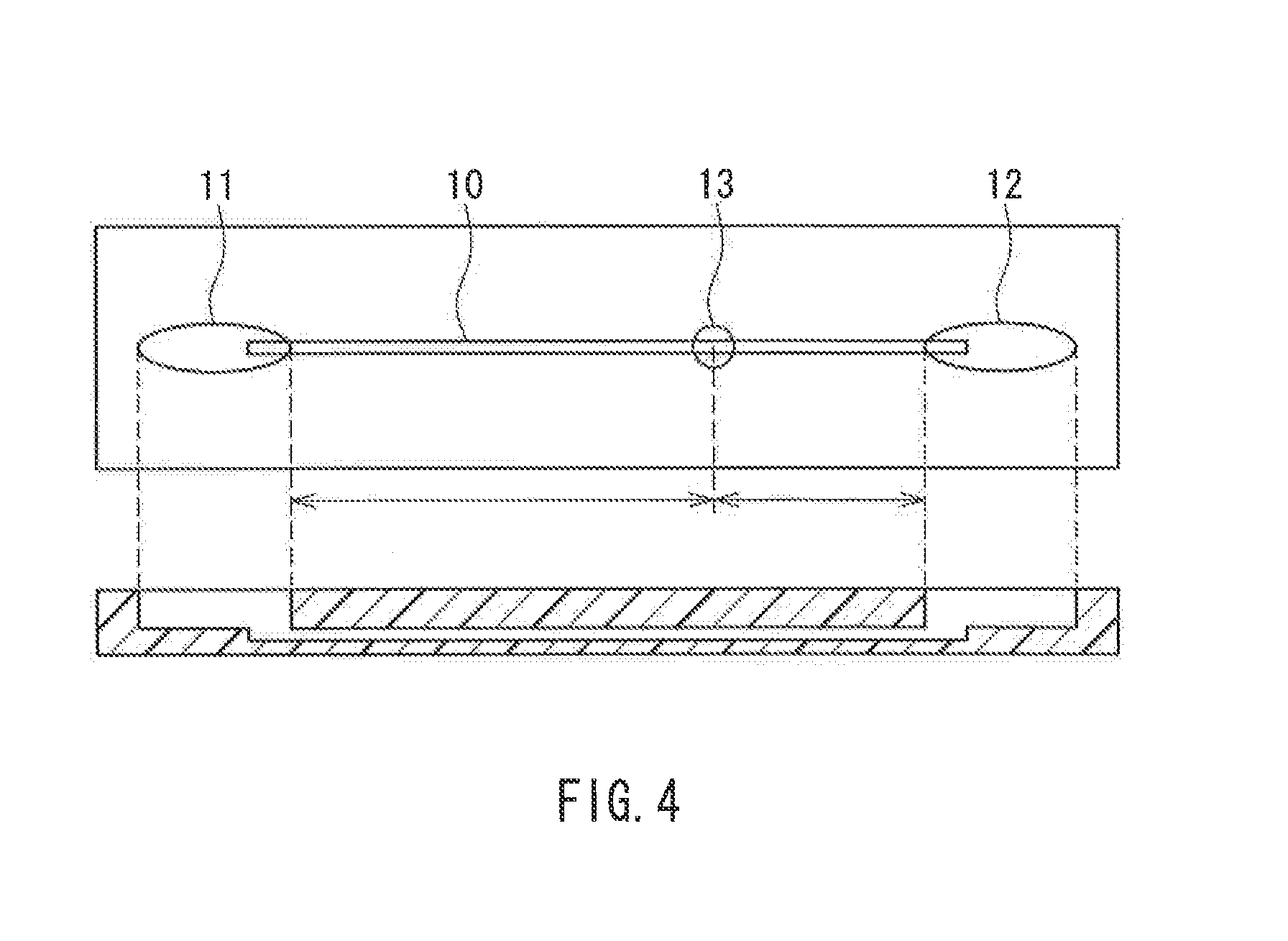Buffer Composition
a buffer solution and composition technology, applied in the field of buffer composition, can solve the problems that the ph of the buffer solution is also subject to temperature-dependent changes, and achieve the effects of reducing the temperature dependence of the ph reducing the ph change of the buffer solution, and improving the accuracy of specimen analysis methods or specimen analysis systems
- Summary
- Abstract
- Description
- Claims
- Application Information
AI Technical Summary
Benefits of technology
Problems solved by technology
Method used
Image
Examples
example 1
Comparative Examples 1, 2
[0067]Buffer solutions of Example 1 (pH 7.0) and Comparative Examples 1, 2 were prepared in the following manner by using maleic acid (pKa=1.94, 6.54) and PIPES (piperazine-1,4-bis(2-ethanesulfonic acid) (pKa=6.76) as the buffer substances. These buffer solutions were heated or cooled, and the pH was measured with a pH meter at a temperature in a range of 10° C. to 50° C. Here, the pH indicates a numerical value taken 2 minutes after immersing an electrode of the pH meter (manufactured by Horiba, Ltd.) in the measurement object (the same is true in the following). ΔpH, which is the difference between the highest value and the lowest value of the measured pH, and ΔpH / ° C. (SLOPE function), which is the slope of a regression line of pH change in accordance with temperature, were calculated. The results are illustrated in Table 1 below.
Buffer Solution of Example 1
[0068]20 mM maleic acid, 20 mM PIPES (pH 7.0, 24° C., controlled with NaOH)
Buffer Solution of Compa...
example 2
Comparative Examples 3, 4
[0072]Buffer solutions of Example 2 and Comparative Examples 3, 4 were prepared (pH 5.0) in the following manner by using glutamic acid (pKa=2.19, 4.25, 9.67) and piperazine (pKa=5.68, 9.82) as the buffer substances. Regarding these buffer solutions, ΔpH and ΔpH / ° C. were calculated similarly to Example 1. The results are illustrated in Table 2 below.
Buffer Solution of Example 2
[0073]35 mM glutamic acid, 5 mM piperazine (pH 5.0, 24° C., controlled with NaOH)
Buffer Solution of Comparative Example 3
[0074]40 mM glutamic acid (pH 5.0, 24° C., controlled with NaOH)
Buffer Solution of Comparative Example 4
[0075]40 mM piperazine (pH 5.0, 24° C., controlled with HCl)
[0076]For each of these buffer solutions, pH was measured similarly to the above-mentioned Example 1.
TABLE 2Example 2ComparativeComparativeTemperaturepHExample 3Example 4(° C.)measured valuepH measured valuepH measured value 55.0345.0055.341105.0335.0165.276155.0275.0345.243205.0345.0475.167255.0355.0545....
example 3
Comparative Examples 5, 6
[0078]Buffer solutions of Examples 3, 4 and Comparative Examples 5, 6 were prepared (pH 5.0) in the following manner by using citric acid (pKa=3.09, 4.75, 6.41) and histidine (pKa=1.82, 6.00, 9.17) or piperazine (pKa=5.68, 9.82) as the buffer substances, and furthermore using sodium chondroitin sulfate C as a substance other than the buffer substances. Regarding these buffer solutions, ΔpH and ΔpH / ° C. were calculated similarly to Example 1. The results are illustrated in Table 3 below.
Buffer Solution of Example 3
[0079]40 mM citric acid, 40 mM histidine, 1.25% w / v sodium chondroitin sulfate C (pH 5.0, 24° C., controlled with NaOH)
Buffer Solution of Example 4
[0080]40 mM citric acid, 20 mM piperazine, 1.25% w / v sodium chondroitin sulfate C (pH 5.0, 24° C., controlled with NaOH)
Buffer Solution of Comparative Example 5
[0081]40 mM citric acid, 1.25% w / v sodium chondroitin sulfate C (pH 5.0, 24° C., controlled with NaOH)
Buffer Solution of Comparative Example 6
[008...
PUM
| Property | Measurement | Unit |
|---|---|---|
| temperatures | aaaaa | aaaaa |
| temperatures | aaaaa | aaaaa |
| temperatures | aaaaa | aaaaa |
Abstract
Description
Claims
Application Information
 Login to View More
Login to View More - R&D
- Intellectual Property
- Life Sciences
- Materials
- Tech Scout
- Unparalleled Data Quality
- Higher Quality Content
- 60% Fewer Hallucinations
Browse by: Latest US Patents, China's latest patents, Technical Efficacy Thesaurus, Application Domain, Technology Topic, Popular Technical Reports.
© 2025 PatSnap. All rights reserved.Legal|Privacy policy|Modern Slavery Act Transparency Statement|Sitemap|About US| Contact US: help@patsnap.com



